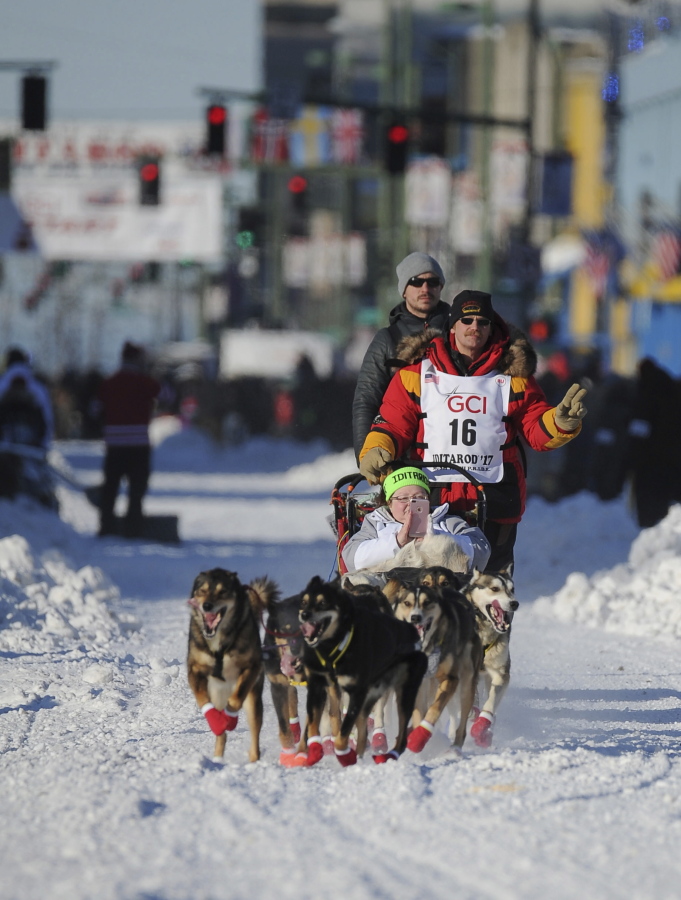ANCHORAGE, Alaska — A father and son are battling for the lead in Alaska’s Iditarod Trail Sled Dog Race.
Mitch Seavey, a two-time Iditarod champion, was the first musher out of the checkpoint in the village of Kaltag on Sunday, leaving at 4:40 a.m. His son, current champ Dallas Seavey, departed five minutes later.
Dallas Seavey has won four of the past five races. He is a third-generation musher who grew up helping his dad train his teams, according to the Iditarod’s website.
Dad and son are close but competitive. Mitch Seavey finished in second place behind Dallas the past two years.
This year’s race across nearly 1,000 miles of grueling Alaska wilderness started March 6 in Fairbanks. The winner is expected early this week in the town of Nome, along Alaska’s frozen Bering Sea coast.
Last week, two dogs from two separate Alaska teams died. A necropsy on an injured dog that died Friday while being flown to Alaska’s largest city indicated the animal overheated, race officials said.
The 2-year-old male dog on musher Scott Smith’s team died while in transit to Anchorage from the Galena checkpoint. Smith dropped the dog, named Smoke, from the team Tuesday because of a wrist injury.
The necropsy findings were consistent with hyperthermia, but further testing will be conducted, race marshal Mark Nordman said.
“We hadn’t anticipated that dogs could overheat while in transport at altitude and in winter conditions,” he said in a news release Sunday. “Unfortunately, we’ve now learned that they can.”
Organizers are making changes to prevent similar problems by avoiding dressing dogs in coats during flight and providing “cool cabin temperatures and increased ventilation,” Nordman said.
The other dog, from musher Seth Barnes’ team, died unexpectedly late Thursday near Galena. A necropsy on the 2-year-old male, Deacon, found abnormalities but not the cause of death, race officials said Sunday. Additional tests were underway.
Mushers begin the Iditarod with teams of 12 to 16 dogs and must finish with at least five on the towline.
Animal advocates maintain the event can be deadly for dogs, and the animals are forced to run in treacherous conditions. PETA says nearly 30 dogs have died in the race since 2004, and it has called for a permanent end to the competition.
Mushers and race supporters, meanwhile, say the Iditarod celebrates world-class canine athletes that have been conditioned for the long trek through diet and training after decades of research and advancements in animal care.
On Sunday, the third competitor out of Kaltag was veteran musher Wade Marrs of Alaska, who left at 5:28 a.m. Next was Nicolas Petit, a native of France who lives just south of Anchorage. Petit departed at 6:35 a.m.
Rounding out the top five was Joar Leifseth Ulsom of Norway, who left Kaltag at 6:50 a.m.
The Kaltag checkpoint offers a brief respite before the trail heads overland to the wind-whipped coast of Norton Sound.



